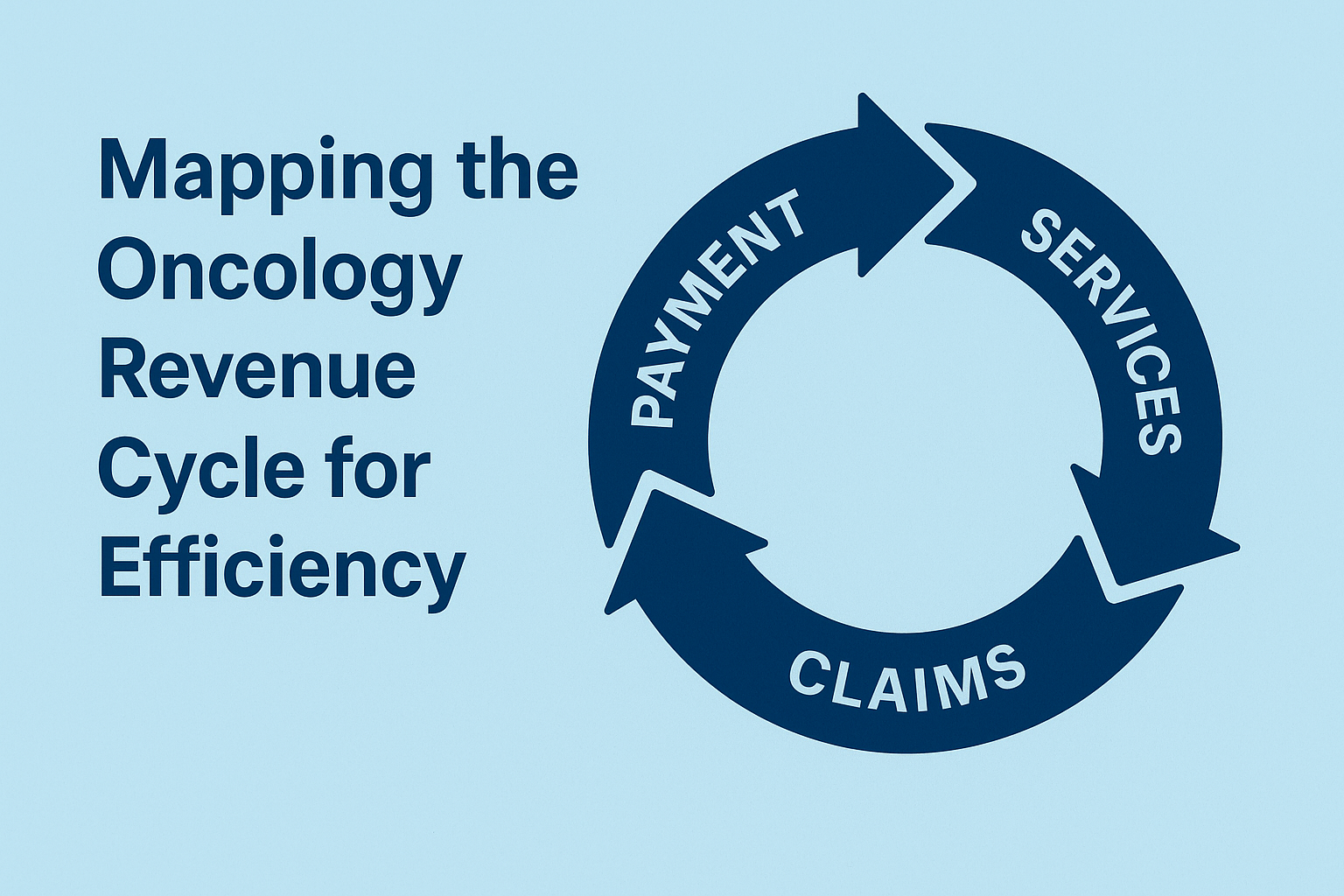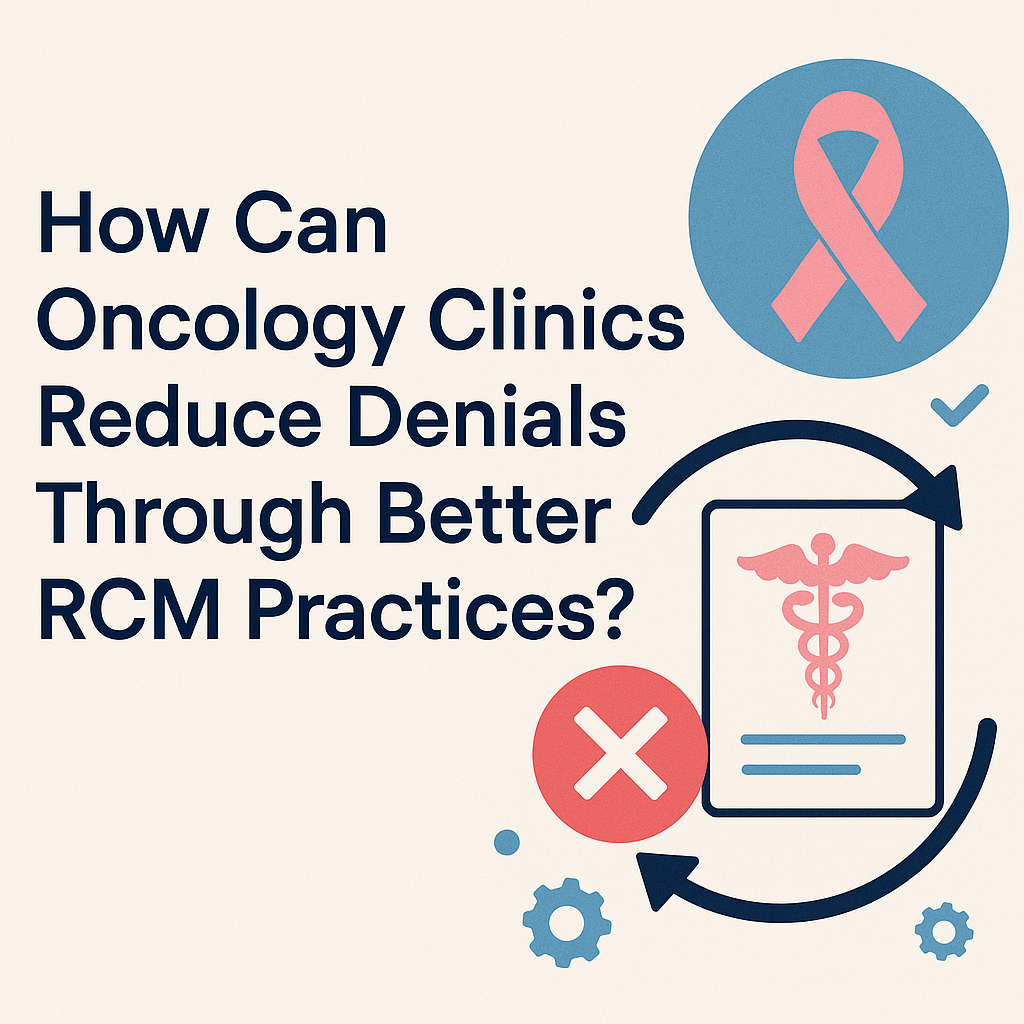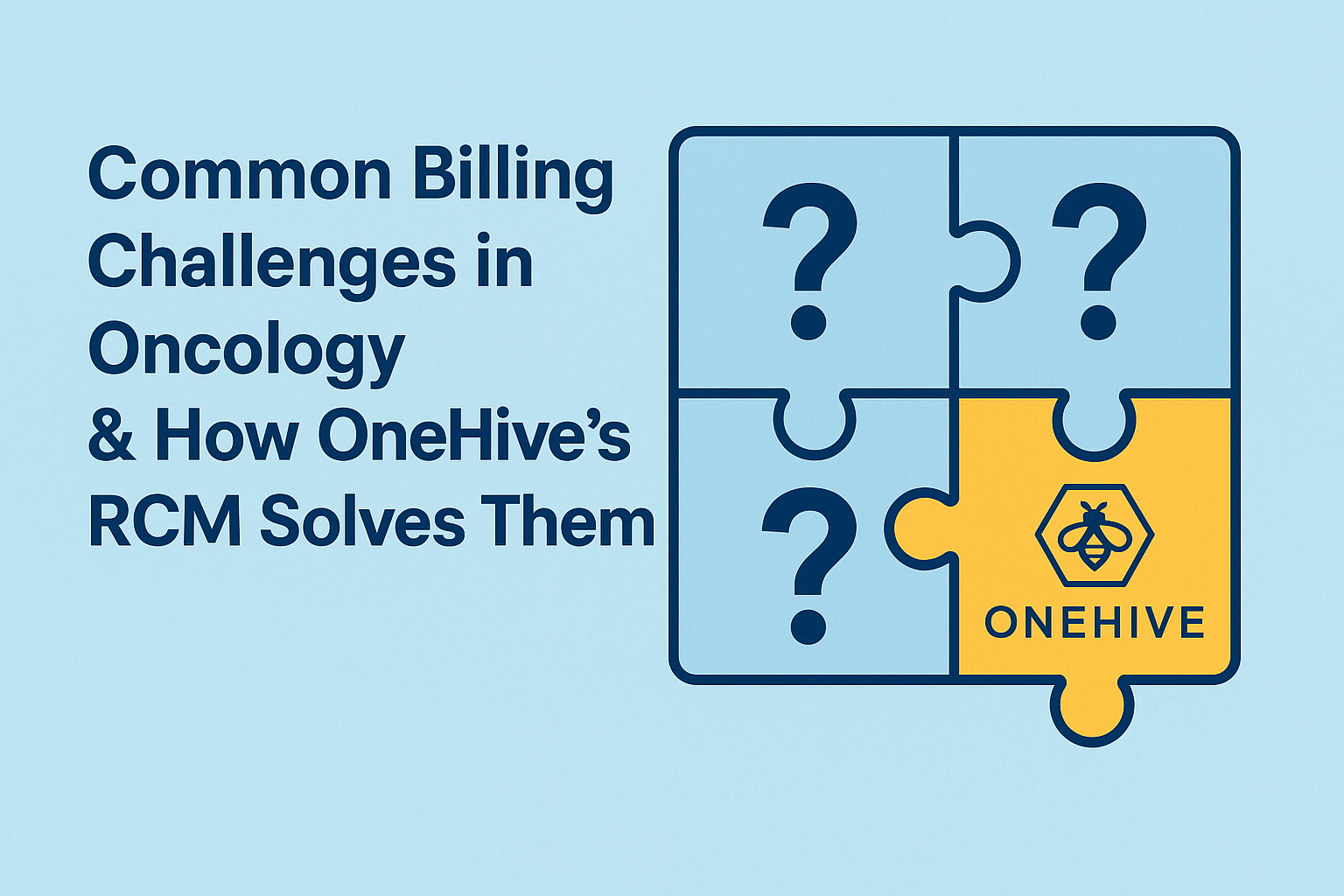In the intricate world of oncology care, delivering life-saving treatments is only part of the equation. Behind every infusion, scan, and follow-up appointment lies a complex web of financial, administrative, and clinical workflows—all of which must work in harmony to support both patient health and practice sustainability.
This is the domain of Revenue Cycle Management (RCM)—and in oncology, where treatment is prolonged, high-cost, and often multi-modality, the revenue cycle is significantly more complicated than in most other specialties.
Efficiency in RCM isn’t just about getting paid faster. It’s about removing administrative burdens, improving patient satisfaction, accelerating care access, and ensuring that every touchpoint—from scheduling to post-care follow-up—is optimized for accuracy, speed, and value.
In this blog post, we’ll map the full oncology revenue cycle from start to finish, highlight the most common inefficiencies, and explore how practices can transform their RCM operations into engines of both financial and clinical performance.
Understanding the Oncology Revenue Cycle: A High-Stakes Ecosystem
Oncology RCM encompasses far more than claims and collections. It’s a lifecycle that begins before the first appointment is scheduled and continues long after treatment concludes.
Because oncology treatment plans often span weeks or months—and involve a mix of infusion therapy, radiation, diagnostics, and specialty drugs—the revenue cycle must be both precise and adaptable.
Let’s explore the key phases of the oncology revenue cycle and identify optimization strategies for each.
1. Scheduling and Patient Intake
Key Processes:
- Appointment scheduling
- Demographic and insurance capture
- Referral management
- Initial eligibility verification
Common Challenges:
- Incomplete or incorrect patient data
- Missed referral authorizations
- Unverified insurance information
Optimization Tips:
- Implement automated insurance verification at the time of scheduling
- Use digital intake forms to improve accuracy
- Standardize referral workflows to prevent delays
Impact: Clean front-end processes reduce downstream denials and speed up reimbursement.
2. Eligibility & Benefit Verification
Key Processes:
- Confirming insurance eligibility
- Verifying benefits for treatments (e.g., chemo, PET scans)
- Identifying coverage limits and out-of-pocket estimates
Common Challenges:
- Manual verification that leads to errors
- Missed secondary coverage
- Lack of real-time patient responsibility estimates
Optimization Tips:
- Integrate real-time eligibility verification tools
- Provide financial counseling using accurate benefits data
- Alert staff to prior authorization requirements at this stage
Impact: Early financial clarity empowers patients and prevents claim denials.
3. Prior Authorization Management
Key Processes:
- Submitting prior auth requests for diagnostics, infusions, and drugs
- Managing payer communications
- Tracking authorization approvals and denials
Common Challenges:
- Delayed treatment due to PA bottlenecks
- Manual tracking of auth status
- Lost revenue due to retroactive denials
Optimization Tips:
- Use an automated prior authorization system with payer-specific workflows
- Set up alerts for expiring or missing authorizations
- Centralize PA tracking across modalities
Impact: Reduces treatment delays and protects revenue integrity.
4. Clinical Documentation & Charge Capture
Key Processes:
- Provider documentation of services
- Charge entry and coding
- Linking treatment to diagnosis and procedure codes
Common Challenges:
- Undercoding due to lack of documentation
- Delays in charge posting
- Missed charges for ancillary services
Optimization Tips:
- Train staff on oncology-specific coding guidelines
- Use EHR-integrated charge capture tools
- Perform daily charge audits to catch missed revenue
Impact: Improves claim accuracy and maximizes allowable reimbursement.
5. Claims Management and Submission
Key Processes:
- Claim creation and scrubbing
- Payer-specific formatting and rules application
- Electronic submission to payers
Common Challenges:
- Rejections due to coding or formatting errors
- Payer delays in processing
- Inconsistent charge lags
Optimization Tips:
- Use AI-powered claim scrubbers
- Monitor first-pass resolution rates
- Automate charge-to-claim conversion in your PM system
Impact: Faster, cleaner claims submission results in fewer reworks and quicker payments.
6. Denial Management and Appeals
Key Processes:
- Monitoring and categorizing denials
- Correcting and resubmitting claims
- Managing appeals and documentation requests
Common Challenges:
- Reactive rather than proactive denial workflows
- Lack of visibility into root causes
- Incomplete documentation for appeals
Optimization Tips:
- Establish a denial dashboard by payer and denial type
- Automate appeal packet generation with documentation templates
- Address root causes via RCA (Root Cause Analysis)
Impact: Reduces write-offs and increases recovered revenue.
7. Patient Billing and Collections
Key Processes:
- Statement generation
- Payment processing
- Financial counseling and payment plans
Common Challenges:
- Unclear patient statements
- Limited payment options
- High bad debt from self-pay patients
Optimization Tips:
- Use clear, itemized patient billing statements
- Offer online and mobile-friendly payment options
- Provide proactive financial counseling and flexible plans
Impact: Boosts patient satisfaction and improves self-pay collection rates.
8. Post-Care Follow-Up and Reporting
Key Processes:
- Final audits and compliance reviews
- Performance monitoring (e.g., days in A/R, denial rates)
- Reporting for payers, value-based programs, and leadership
Common Challenges:
- Fragmented reporting tools
- Manual tracking of KPIs
- Difficulty correlating clinical and financial outcomes
Optimization Tips:
- Leverage centralized RCM dashboards
- Track value-based metrics tied to programs like the EOM
- Use monthly revenue cycle performance reviews to drive improvement
Impact: Supports strategic decision-making and continuous revenue cycle improvement.
The Case for End-to-End Oncology RCM Optimization
Every phase of the oncology revenue cycle is interconnected. An error in the intake process can result in a denied claim three months later. A delay in prior authorization can postpone treatment and extend the billing timeline by weeks.
That’s why more oncology practices are embracing end-to-end revenue cycle optimization—using integrated systems, automation, and data analytics to eliminate inefficiencies at every point of care.
Benefits of a Holistic RCM Strategy:
- Shorter revenue cycles and faster time-to-payment
- Lower denial rates and fewer write-offs
- Improved patient experiences and financial transparency
- Better alignment with value-based care models
- Increased staff productivity and reduced burnout
With the right RCM framework in place, oncology practices can focus less on administrative friction—and more on delivering compassionate, quality care to their patients.
How OneHive Streamlines the Oncology Revenue Cycle
If you’re looking to transform your oncology revenue cycle for efficiency, OneHive offers a purpose-built solution that maps and optimizes every phase from scheduling to post-care.
What Sets OneHive Apart:
- Oncology-specialized workflows and coding intelligence
- Real-time eligibility, auth, and claim automation
- Integrated patient financial engagement tools
- Denial prevention powered by predictive analytics
- EOM-compliant reporting and performance dashboards
With OneHive, oncology practices get:
- Fewer delays
- Faster collections
- Happier patients
- A healthier bottom line
Final Thoughts: Efficiency Is a Strategic Imperative in Oncology RCM
In oncology, every moment counts. Whether it’s starting treatment on time or easing the financial burden on a patient, efficient revenue cycle management directly impacts both care quality and practice sustainability.
Mapping and optimizing your revenue cycle from scheduling to post-care isn’t just a billing strategy—it’s a patient care strategy.
By investing in automation, integration, and specialized RCM tools like OneHive, oncology practices can build a smarter, more resilient revenue cycle—one that supports patients, providers, and performance at every step




